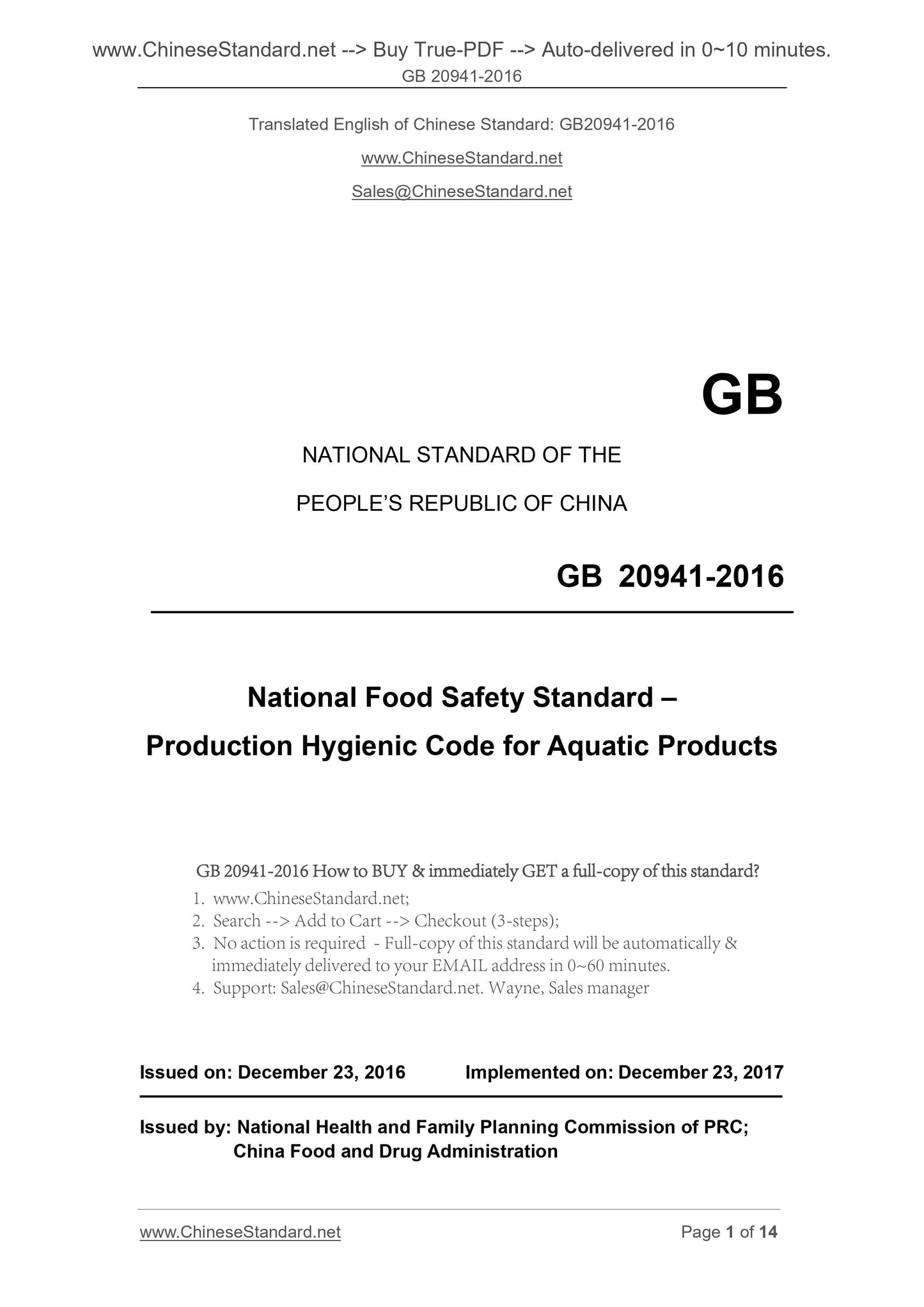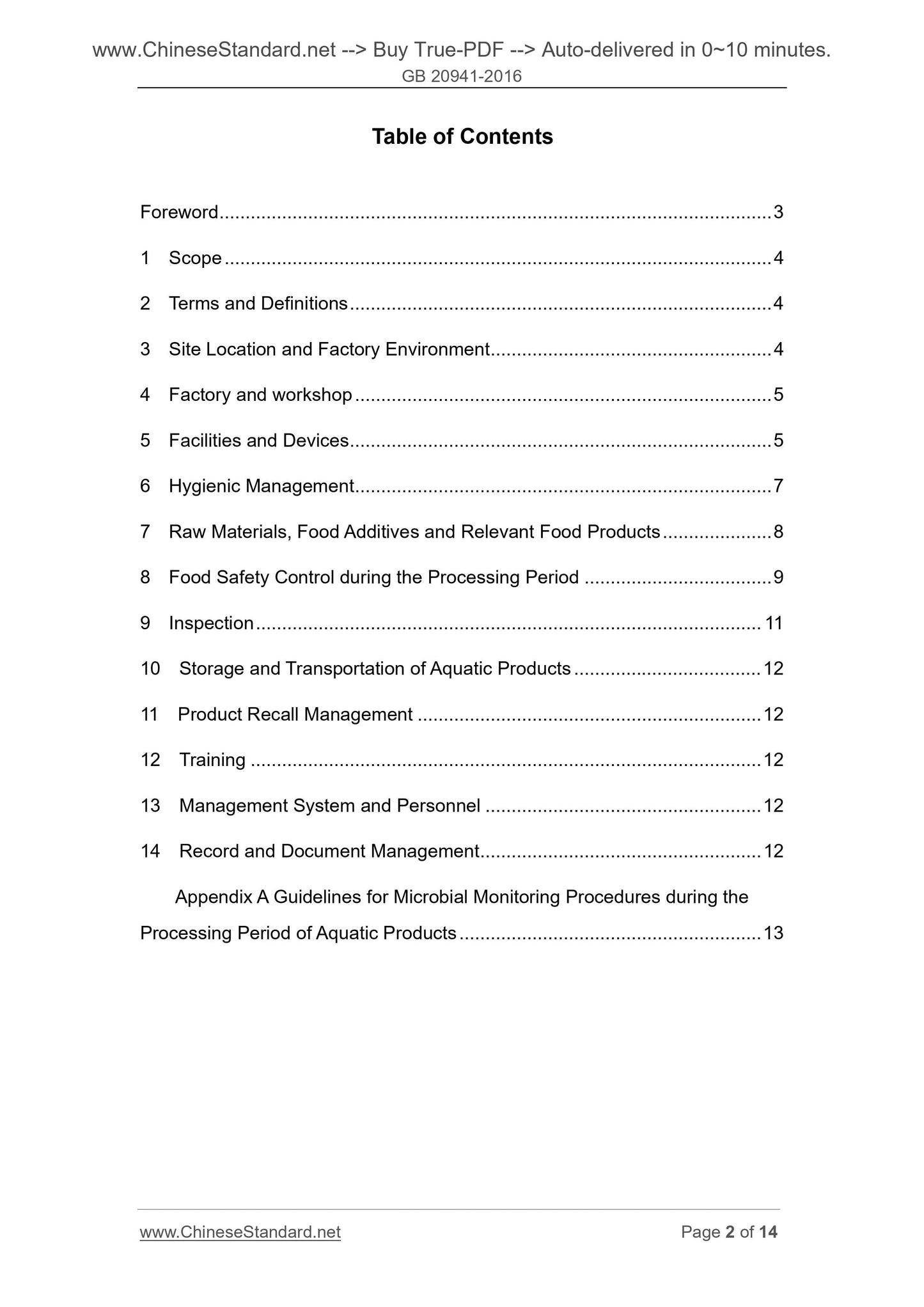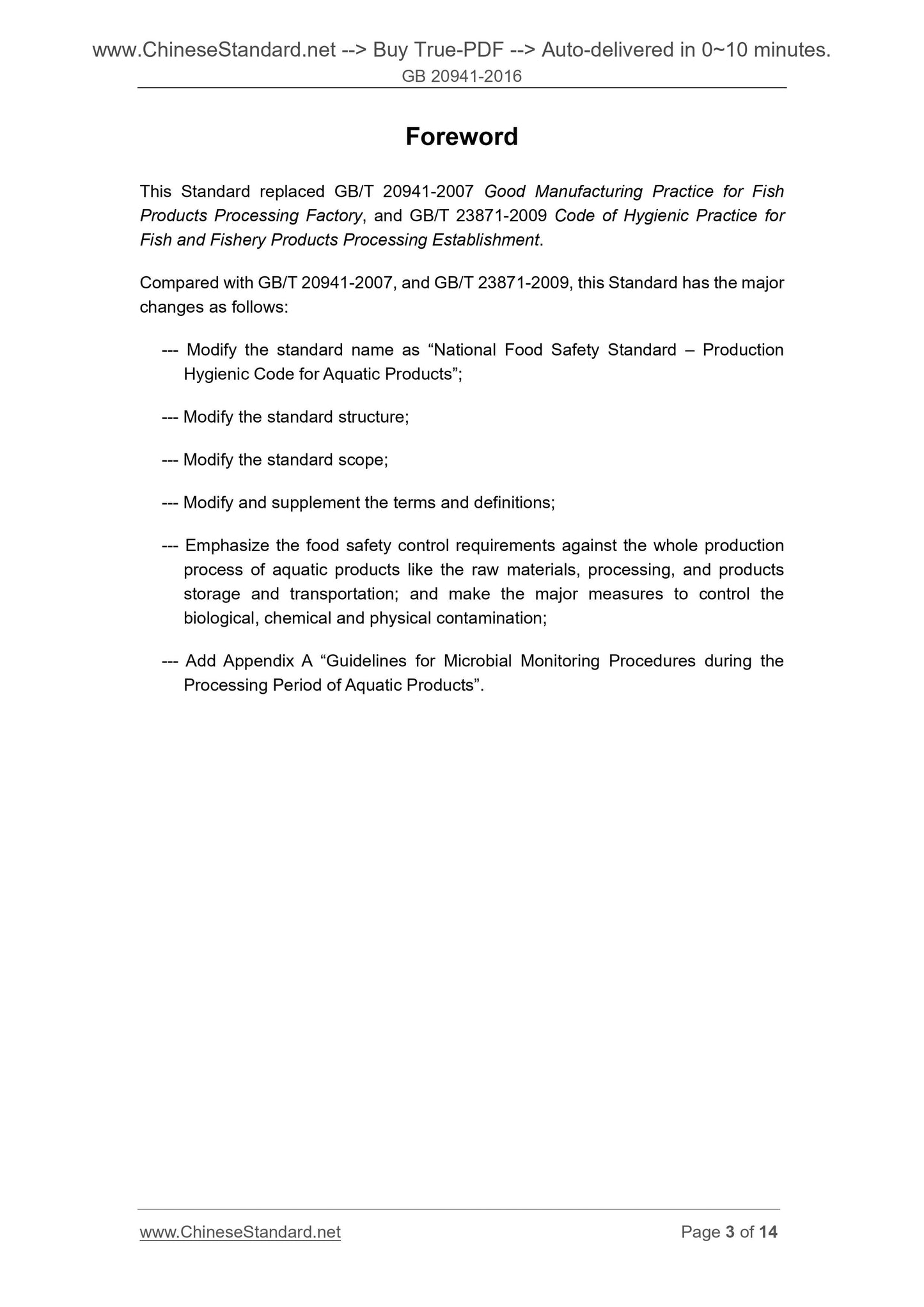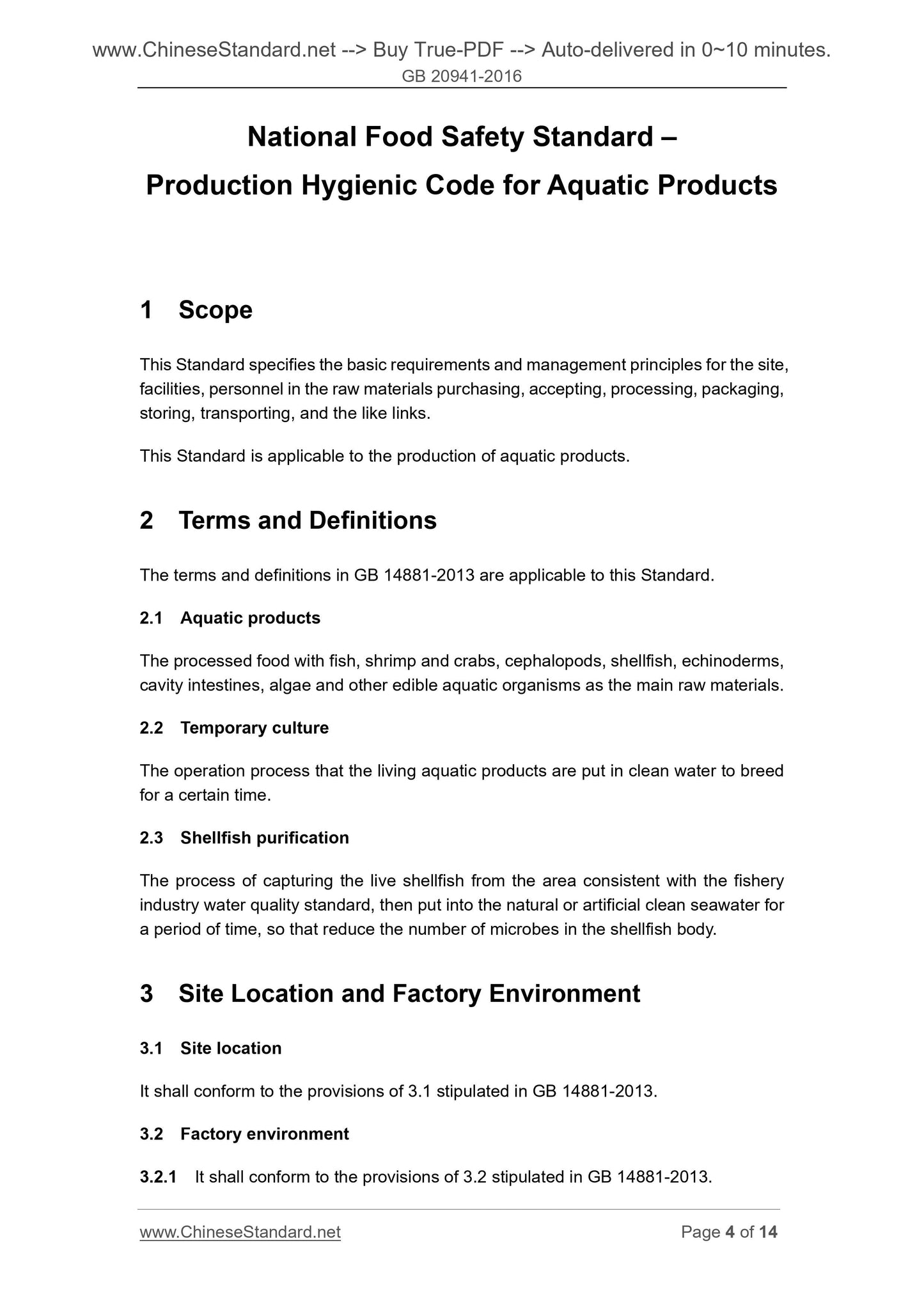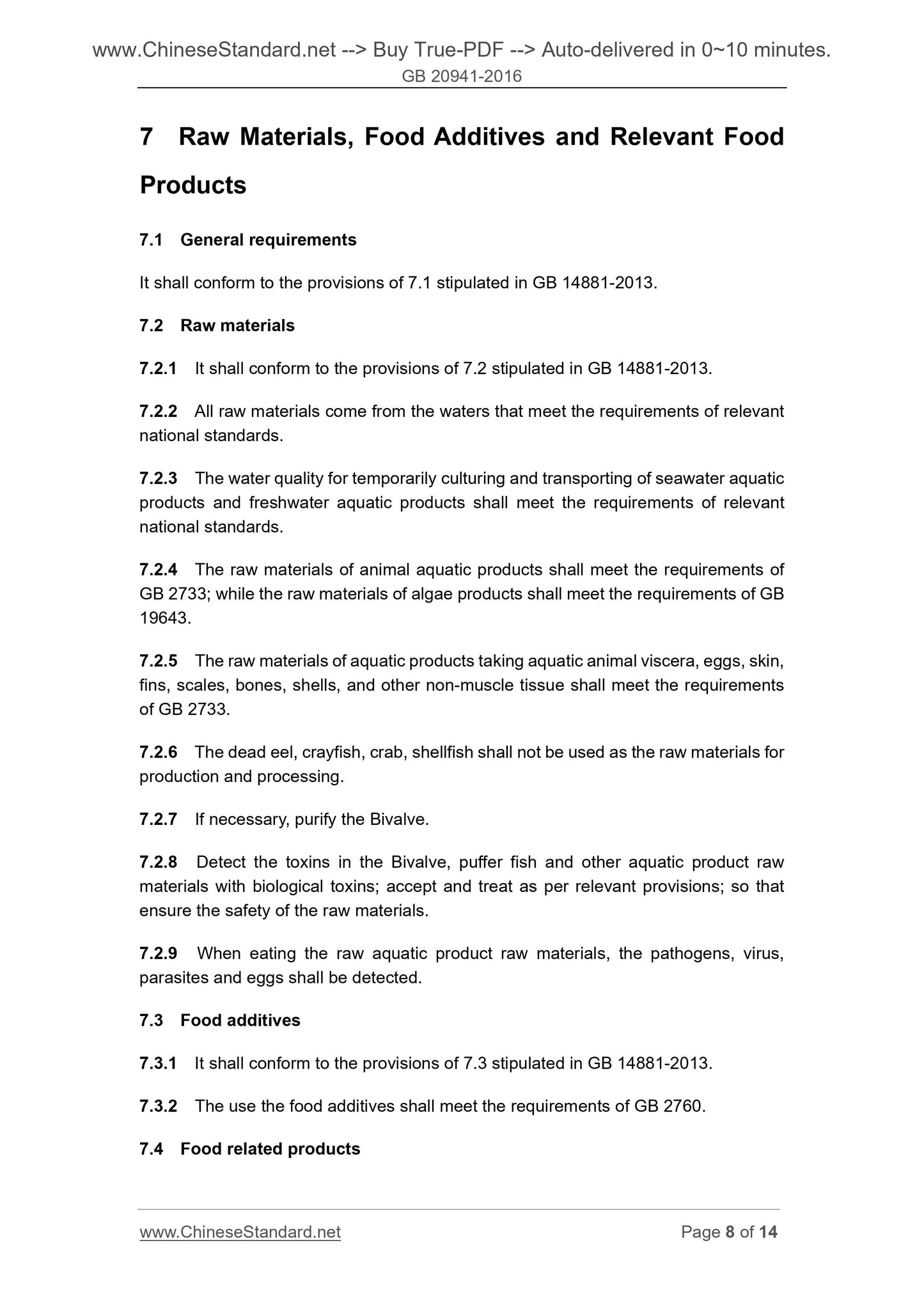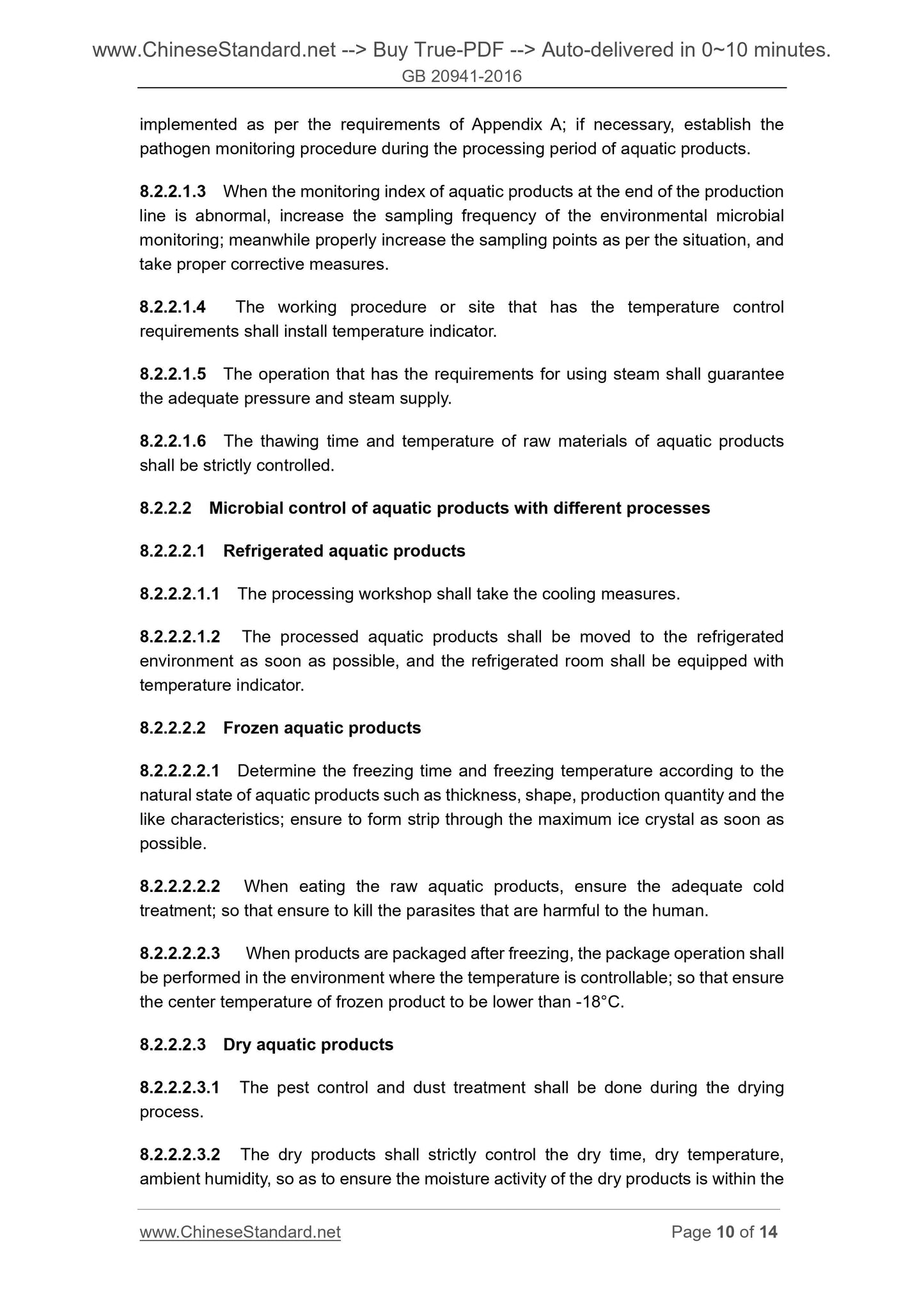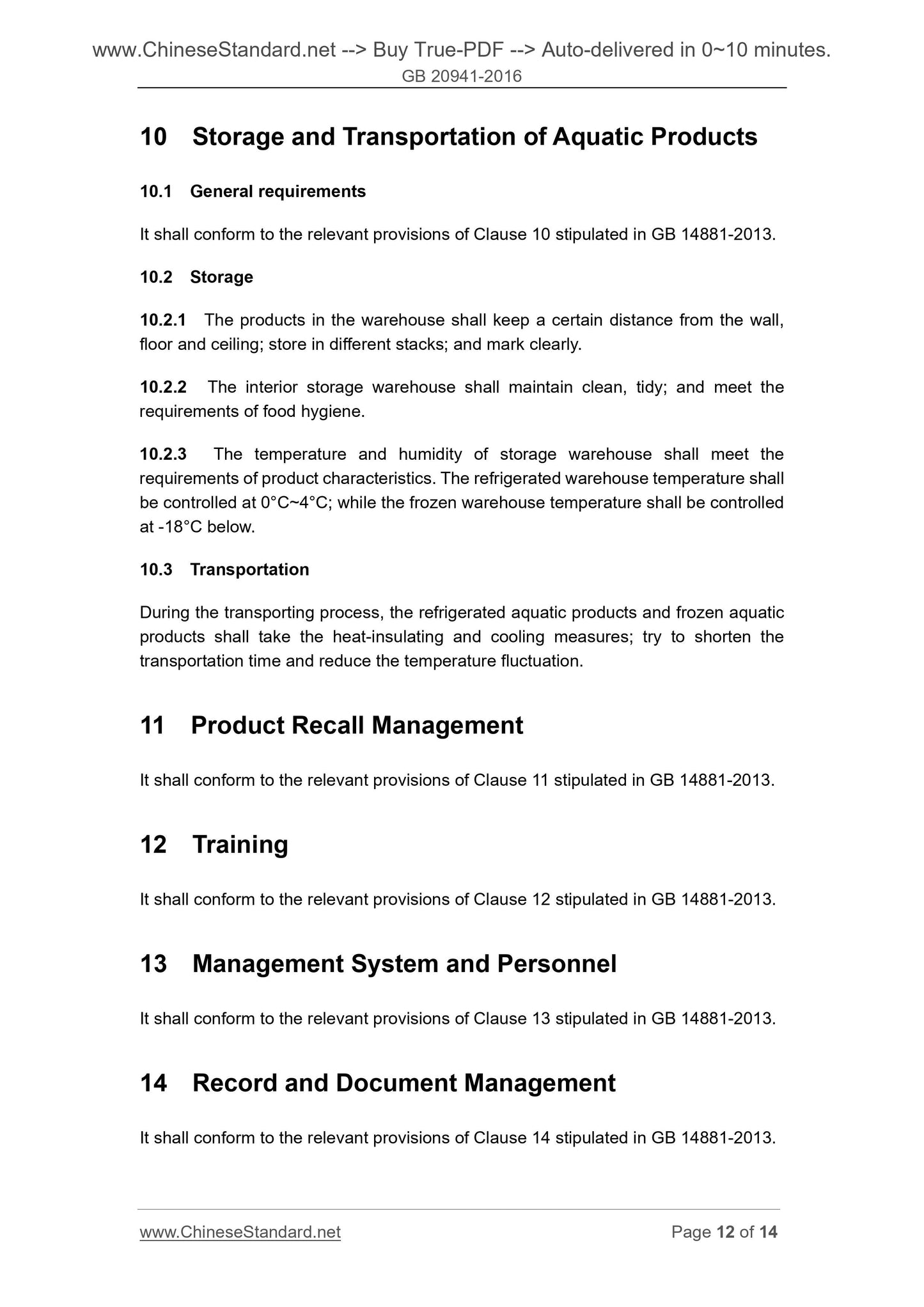1
/
of
7
www.ChineseStandard.us -- Field Test Asia Pte. Ltd.
GB 20941-2016 English PDF
GB 20941-2016 English PDF
Regular price
$85.00
Regular price
Sale price
$85.00
Unit price
/
per
Shipping calculated at checkout.
Couldn't load pickup availability
GB 20941-2016: National food safety standard - Production Hygienic Code for Aquatic Products
Delivery: 9 seconds. Download (and Email) true-PDF + Invoice.Get Quotation: Click GB 20941-2016 (Self-service in 1-minute)
Newer / historical versions: GB 20941-2016
Preview True-PDF
Scope
This Standard specifies the basic requirements and management principles for the site,facilities, personnel in the raw materials purchasing, accepting, processing, packaging,
storing, transporting, and the like links.
This Standard is applicable to the production of aquatic products.
Basic Data
| Standard ID | GB 20941-2016 (GB20941-2016) |
| Description (Translated English) | National food safety standard - Production Hygienic Code for Aquatic Products |
| Sector / Industry | National Standard |
| Classification of Chinese Standard | X10 |
| Word Count Estimation | 9,953 |
| Date of Issue | 2016-12-23 |
| Date of Implementation | 2017-06-23 |
| Older Standard (superseded by this standard) | GB/T 20941-2007; GB/T 23871-2009 |
| Regulation (derived from) | National Health and Family Planning Commission Notice No.17 of 2016 |
| Issuing agency(ies) | National Health and Family Planning Commission of the People's Republic of China, State Food and Drug Administration |
Share
